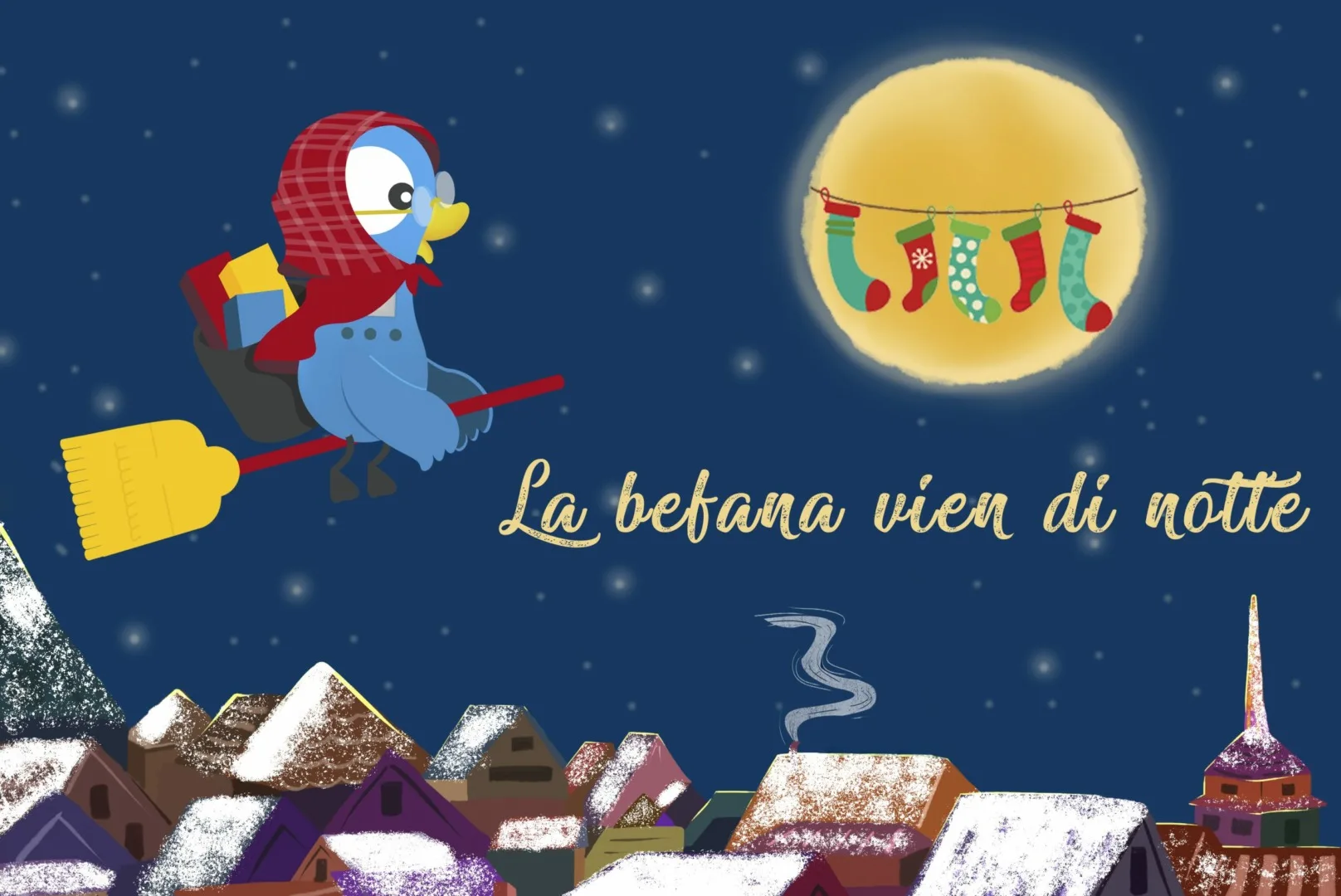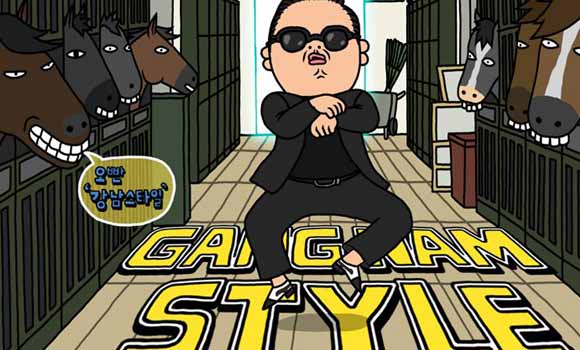In a few days arrives the Befana, the old lady so beloved by all children and also by Ocarina! Toys, sweets, chocolates – onions and charcoal are never lacking so – the Befana flies over the rooftops with her broom and, descending into the chimneys, fills the stockings with all kinds of surprises. As the song says: “La Befana comes at night with her torn shoes, she flies over all the rooftops, carrying dolls and candies. On her shoulders, she carries a lot of gifts and she puts them on the fireplaces, smiling she brings sweets and gifts for children… ”.
The ‘Befana’ tradition
The ‘Befana’ history begins in the dawn of time and descends from magical pagan traditions, linked to the seasonal cycles of agriculture, and relating to the harvest of the past year, ready to resume its cycle every year. Indeed, on the twelfth night after the winter solstice, the death and rebirth of nature is celebrated through Mother Nature.
In Roman times, the Befana embodies one of the female figures who fly at night over sown fields to promote crop fertility. His broom represents the symbol of the purification of evil spirits, in anticipation of the season rebirth. According to some, it is Diana, the lunar goddess of wild game and vegetation, who led these nocturnal walks, followed by figures similar to those that were called, in the Middle Ages, witches.
The ‘Befana’ history begins in the dawn of time and descends from magical pagan traditions, linked to the seasonal cycles of agriculture, and relating to the harvest of the past year, ready to resume its cycle every year. Indeed, on the twelfth night after the winter solstice, the death and rebirth of nature is celebrated through Mother Nature.
In Roman times, the Befana embodies one of the female figures who fly at night over sown fields to promote crop fertility. His broom represents the symbol of the purification of evil spirits, in anticipation of the season rebirth. According to some, it is Diana, the lunar goddess of wild game and vegetation, who led these nocturnal walks, followed by figures similar to those that were called, in the Middle Ages, witches.
From the 4th century AD the Church will condemn pagan rites by trying to absorb them in its own tradition. Thus the Befana becomes an affectionate old woman, represented on a flying broom with a knotted shawl of thick wool and not with the black hat, who flies in the sky riding the broom upside down.
His character also becomes closely related to those of the Three Kings. The Legend tells that on a very cold winter night, Baldassare, Gasparre and Melchiorre, on the long way to Bethlehem to see the Child Jesus, unable to find the way, asked for information from an old woman who showed them the path. The Three Kings then invited the woman to join them, but, despite the insistence, she refused. Once the Three Kings were gone, she wished she had followed them, so she packed a bag full of candies and started looking for them, but to no avail. The old lady then knocked on every door, giving every child she met candies, in the hope that one of them was the Child Jesus.
His character also becomes closely related to those of the Three Kings. The Legend tells that on a very cold winter night, Baldassare, Gasparre and Melchiorre, on the long way to Bethlehem to see the Child Jesus, unable to find the way, asked for information from an old woman who showed them the path. The Three Kings then invited the woman to join them, but, despite the insistence, she refused. Once the Three Kings were gone, she wished she had followed them, so she packed a bag full of candies and started looking for them, but to no avail. The old lady then knocked on every door, giving every child she met candies, in the hope that one of them was the Child Jesus.
La Befana in Italy
Epiphany has always been a religious holiday in Italy, although it is also celebrated as a secular holiday. Today, after a period when it had been somewhat forgotten, Befana has come back to life, especially in the regions of central Italy. This nice old woman is therefore living a second youth, linked to the rediscovery and enhancement of roots and the most authentic cultural identity.
In Urbania, in the Marche region, the ” Epiphany National Day” has been celebrated for twenty years and there is the official House of Befana.
In Florence, Epiphany is celebrated with the traditional Cavalcade of the Magi, a reconstruction of the arrival of the Magi of the Holy Family in the streets of the historic center, on horseback, dressed in Renaissance costumes of great splendor.
Epiphany has always been a religious holiday in Italy, although it is also celebrated as a secular holiday. Today, after a period when it had been somewhat forgotten, Befana has come back to life, especially in the regions of central Italy. This nice old woman is therefore living a second youth, linked to the rediscovery and enhancement of roots and the most authentic cultural identity.
In Urbania, in the Marche region, the ” Epiphany National Day” has been celebrated for twenty years and there is the official House of Befana.
In Florence, Epiphany is celebrated with the traditional Cavalcade of the Magi, a reconstruction of the arrival of the Magi of the Holy Family in the streets of the historic center, on horseback, dressed in Renaissance costumes of great splendor.
In the province of Grosseto there are the Befani (on the island of Elba, they are called Befanotti); men who, on Epiphany day, accompany the Befanas in the streets of the villages to interpret some Maremma traditional songs.
But even outside of Tuscany, Epiphany is celebrated on January 6. In Veneto, there’s a symbolic bonfire called “panevin”; it is a fire that erases all the negative things from the past year. In Venice, takes place the characteristic Befana Regatta which has reached its forty-second edition in 2020, during which contenders dressed in Befana, Marantega in dialect, compete with oars in the Canal Grande, dressed in skirts, woolen shawl, hat and handkerchief on the head.
But even outside of Tuscany, Epiphany is celebrated on January 6. In Veneto, there’s a symbolic bonfire called “panevin”; it is a fire that erases all the negative things from the past year. In Venice, takes place the characteristic Befana Regatta which has reached its forty-second edition in 2020, during which contenders dressed in Befana, Marantega in dialect, compete with oars in the Canal Grande, dressed in skirts, woolen shawl, hat and handkerchief on the head.
La Befana in the world
Unlike Italy, in France, on January 6, children do not receive sweets or stockings, but the tradition tells about a special cake, the “Galette des Rois “, with a surprise bean inside. The dessert is divided into as many slices as there are guests at the table, plus a part reserved for a poor person in case he shows up at the door. The lucky one who finds the bean becomes the king or queen of the party!
No stockings, no old brooms, no charcoal either for kids in the UK, where the Twelfth Night is celebrated with a performance of characters from English folklore, like the Holly Man, a green elf decorated with green leaves, holly and flowers. The typical dessert is the Twelfth Night Cake, a delicacy filled with almonds and candied fruit. Inside are hidden a bean and a pea to elect the king and queen of the party!
Unlike Italy, in France, on January 6, children do not receive sweets or stockings, but the tradition tells about a special cake, the “Galette des Rois “, with a surprise bean inside. The dessert is divided into as many slices as there are guests at the table, plus a part reserved for a poor person in case he shows up at the door. The lucky one who finds the bean becomes the king or queen of the party!
No stockings, no old brooms, no charcoal either for kids in the UK, where the Twelfth Night is celebrated with a performance of characters from English folklore, like the Holly Man, a green elf decorated with green leaves, holly and flowers. The typical dessert is the Twelfth Night Cake, a delicacy filled with almonds and candied fruit. Inside are hidden a bean and a pea to elect the king and queen of the party!
Instead, Spanish and Germans follow a celebration more similar to Italy. The little ones on January 6 wake up very early to run to see the gifts that the Three Kings have left them. The day before, they leave some water in front of the door for the thirsty camels, along with something to eat.
Thirteen Santa Clauses arrive in Spain from December 11th to 25th, one per day, and from Christmas on, they leave one per day. January 6 the last Santa Claus leaves the town and marks the end of the Christmas holidays. The Epiphany is celebrated with a torchlight procession, to which, in addition to the thirteenth Santa, also participate the king and the queen of the elves. The torchlight procession ends with a bonfire and fireworks.
In Russia, on the other hand, Orthodox Christmas is celebrated on Epiphany Day, January 6. On this anniversary, children anxiously await their gifts, brought by Santa Claus, called Father Gelo, accompanied by Babuschka, a kind old lady…
In Russia, on the other hand, Orthodox Christmas is celebrated on Epiphany Day, January 6. On this anniversary, children anxiously await their gifts, brought by Santa Claus, called Father Gelo, accompanied by Babuschka, a kind old lady…








